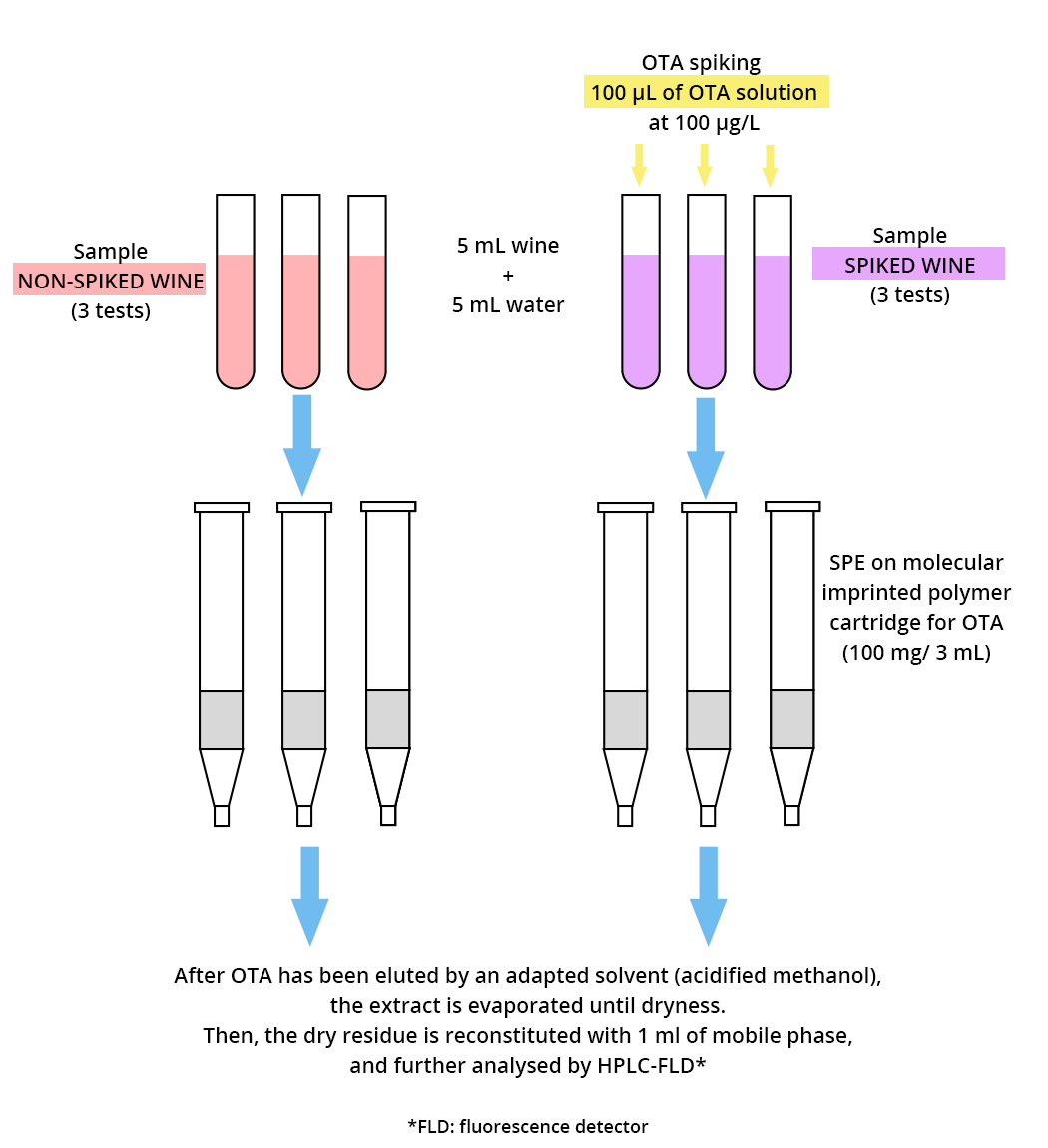Exercise: calculation of extraction recovery
We seek to analyze a molecule (ochratoxin A, a mycotoxin that can be found in various foodstuffs) in wine.
Extraction is carried out using the solid-phase technique (SPE) on a cartridge filled with a molecularly imprinted polymer that very selectively captures ochratoxin A (OTA).
Several tests are conducted to estimate the extraction recovery: 3 tests with unspiked wine and 3 tests with OTA-spiked wine.
Each wine sample (5 ml) is mixed with ultrapure water (5 ml) before percolation through the SPE cartridge in order to improve OTA retention on the solid phase.

The OTA results for the analyzed extracts are presented in the table below.
| Concentration in OTA (µg/L) | ||
|---|---|---|
| Unspiked wine | Test 1 Test 2 Test 3 |
1.14 1.20 1.14 |
| Spiked wine | Test 1 Test 2 Test 3 |
10.78 10.59 10.60 |
Based on these results, calculate the OTA extraction recovery of the method.
Answer
Test 1 96.2 %
Test 2 94.3 %
Test 3 94.4 %
Therefore, the average recovery is 94.9%.

Tests on unspiked wine give an estimate of the average OTA concentration naturally present in this wine (1.16 µg/L). To estimate how much of the OTA added during spiking is recovered, you need to subtract this concentration.

It is best to think in terms of mass of OTA extracted or present in the extracts, rather than in terms of concentration: this avoids mistakes.




